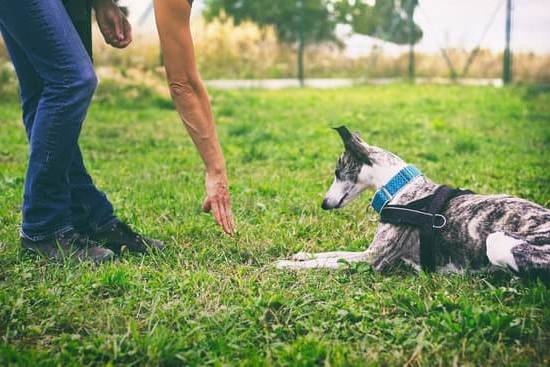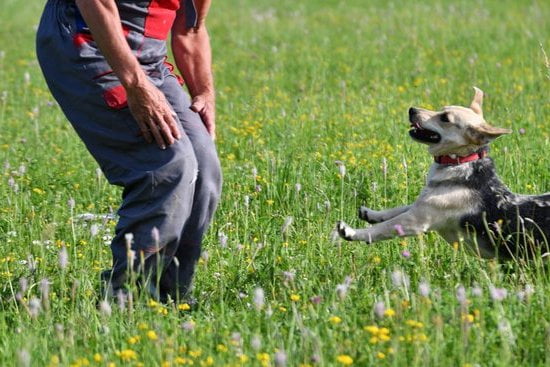Service dog training is a vital process that enables these special animals to provide essential support and assistance to individuals with disabilities. From basic obedience to task-specific training, service dogs are required to undergo rigorous preparation to fulfill their unique roles. In this article, we will delve into the comprehensive world of service dog training, covering everything from the benefits of having a service dog to the selection process and types of specialized training needed for these remarkable animals.
The role of service dogs in assisting individuals with disabilities cannot be overstated. These highly trained animals offer invaluable support in various ways, including guiding individuals who are blind or visually impaired, alerting those who are deaf or hard of hearing, providing physical assistance for those with mobility issues, and even offering emotional support for people with mental health conditions.
Understanding the specific needs and requirements of service dogs is crucial for appreciating their significant impact on the lives of their owners.
As we explore the world of service dog training, we will also discuss the different types of service dogs and the specialized training they require to effectively carry out their tasks. Whether it’s guide dogs for individuals who are blind or mobility assistance dogs for those with physical limitations, each type calls for specific skills and abilities that are honed through targeted training programs.
By gaining a deeper understanding of these varied roles and training needs, we can better appreciate the dedication and commitment involved in preparing these extraordinary animals for their life-changing work.
Benefits of Having a Service Dog
Service dogs provide invaluable support and assistance to individuals with disabilities, mental health conditions, and other medical or emotional needs. These highly-trained animals play a crucial role in helping their handlers navigate daily life and can significantly improve their quality of life. The benefits of having a service dog are numerous and can make a positive impact on the overall well-being of their handlers.
One of the primary benefits of having a service dog is the increased independence it provides to individuals with disabilities. For example, guide dogs assist visually impaired individuals in safely navigating their surroundings, while mobility assistance dogs help those with physical disabilities by retrieving dropped items, opening doors, and providing stability while walking. Additionally, psychiatric service dogs offer emotional support and alert their handlers to anxiety or panic attacks, providing a sense of security and comfort.
Another key benefit of having a service dog is the improvement in the handler’s mental health and emotional well-being. These specially trained animals can alleviate symptoms of anxiety, depression, and post-traumatic stress disorder (PTSD) through their calming presence, ability to perform grounding techniques during moments of distress, and constant companionship. Service dogs also promote socialization and reduce feelings of loneliness or isolation for their handlers.
In addition to the practical assistance and emotional support they provide, service dogs also contribute to increased physical activity for their handlers. Whether it’s through guiding them on walks or engaging in interactive play as part of their training exercises, service dogs encourage regular exercise and outdoor activities. This not only benefits the physical health of the handler but also contributes to an overall improvement in mood and mental well-being.
| Benefit | Description |
|---|---|
| Increased Independence | Guide dogs assist visually impaired individuals in navigating surroundings. |
| Improved Mental Health | Alleviates symptoms of anxiety, depression, PTSD through calming presence. |
| Physical Activity | Encourages regular exercise through walking or engaging in play activities. |
Types of Service Dogs and Their Specific Training Needs
Service dogs can be trained to assist with a variety of conditions and disabilities, each requiring specific training to ensure they can perform their duties effectively. Here are some common types of service dogs and their specific training needs:
Guide Dogs for the Blind
Guide dogs are trained to assist individuals who are blind or visually impaired. They are taught to navigate obstacles, stop at curbs, and avoid moving vehicles. Additionally, guide dogs must be able to follow directional commands and guides issued by their handler.
Hearing Dogs
Hearing dogs are trained to alert individuals who are deaf or hard of hearing to important sounds, such as doorbells, alarms, or the sound of someone approaching from behind. These dogs also need to be comfortable in various environments and capable of responding calmly in unexpected situations.
Service Dogs for Mobility Assistance
Dogs trained to assist individuals with mobility issues may perform tasks such as picking up dropped items, opening doors, turning on lights, and providing stability for those with balance problems. Their training includes learning how to properly support their handler’s weight and navigate different surfaces safely.
Medical Alert Dogs
Medical alert dogs are trained to detect changes in their handler’s body that may indicate an impending medical emergency. This could include sensing changes in blood sugar levels for individuals with diabetes or detecting the onset of a seizure.
Each type of service dog undergoes specialized training tailored to their owner’s needs and lifestyle. This training is typically provided through accredited service dog training programs that focus on addressing the specific requirements of each type of service dog.
The certification process ensures that the dog has met certain standards for behavior and performance, providing peace of mind for both the handler and the public. Service dog training requires dedication from both the trainer and the future owner in order to ensure a successful partnership between the dog and its handler.
The Process of Selecting a Service Dog Candidate
When it comes to selecting a service dog candidate, there are several important considerations to take into account. This process is crucial in determining the success of the service dog and its ability to effectively assist its handler.
One of the first steps in this process is identifying the specific needs of the individual who will benefit from the service dog. Whether it’s guiding individuals with visual impairments, providing support for individuals with mobility limitations, or assisting those with psychiatric disorders, it’s essential to match the unique skills of the service dog with the specific needs of its handler.
Evaluating Temperament and Behavior
Another critical aspect of selecting a service dog candidate is evaluating their temperament and behavior. Service dogs must possess qualities such as calmness, confidence, and willingness to work in various environments and situations. They should also demonstrate an affinity for human interaction and a strong desire to please their handler.
Additionally, they must exhibit stability in their behavior and reactions to different stimuli. Evaluating these traits helps ensure that the selected candidate has the potential to excel in their role as a service dog.
Matching Breeds to Specific Needs
Different breeds have varying characteristics and tendencies that make them better suited for specific types of service work. For example, Labrador Retrievers are often chosen for guide dog work due to their intelligence, loyalty, and gentle nature. On the other hand, German Shepherds are commonly utilized as mobility assistance dogs because of their strength, agility, and protective instincts. Understanding these breed-specific traits is essential in matching the right candidate with the appropriate type of service work.
Overall, selecting a service dog candidate involves a thorough assessment of both the individual’s needs and preferences and the candidate’s temperament, behavior, and breed characteristics. It requires careful consideration and evaluation to ensure that each match has the potential for success in fulfilling its role as a valuable service animal through proper
Basic Obedience Training for Service Dogs
Service dog training is a rigorous process that involves various stages of training, starting with basic obedience training. This phase of training is crucial as it lays the foundation for the service dog’s skills and behavior in carrying out its tasks and responsibilities.
During basic obedience training, service dogs are taught essential commands such as sit, stay, come, heel, and down. These commands are fundamental in ensuring that the service dog can effectively assist its handler in various situations. Service dogs must also learn to exhibit good manners and behavior in public spaces, making them reliable companions for individuals with disabilities.
The key to successful basic obedience training for service dogs lies in consistency, positive reinforcement, and patience. Handlers or owners should dedicate time each day to practice these commands with their service dogs. It is important to use rewards such as treats or praise to encourage desired behavior while gently correcting any mistakes. Additionally, enrolling in a reputable service dog training program or working with a certified trainer can provide invaluable support and guidance during this crucial stage of training.
Overall, basic obedience training plays a vital role in preparing service dogs to fulfill their duties effectively. It sets the groundwork for more advanced task-specific training and allows service dogs to become valuable assets to their handlers’ daily lives.
Advanced Task-Specific Training for Service Dogs
After mastering basic obedience training, service dogs undergo advanced task-specific training to learn the specialized skills needed to assist their handlers. This phase of service dog training involves teaching specific tasks such as guiding the visually impaired, alerting individuals with hearing impairments to sounds, retrieving items for individuals with mobility challenges, and providing support for those with psychiatric disabilities.
Each type of service dog requires different skills and abilities, so their training must be tailored to meet these specific needs.
One important aspect of advanced task-specific training for service dogs is the use of positive reinforcement techniques. During this phase, trainers use rewards such as treats, toys, or praise to reinforce desired behaviors and tasks. Through consistent practice and positive reinforcement, service dogs become proficient in performing their specialized tasks and responding appropriately to their handler’s needs.
Service dog training programs that specialize in advanced task-specific training often have experienced instructors who understand the unique requirements of each type of service dog. These programs may offer certifications upon completion, ensuring that the service dogs have met certain standards and are equipped to assist individuals effectively. Additionally, these accredited programs provide ongoing support for both the service dogs and their handlers, helping to ensure a successful partnership.
Overall, advanced task-specific training is an essential part of preparing service dogs to fulfill their vital roles in supporting individuals with disabilities. By undergoing this specialized training, service dogs can make a significant difference in the lives of their handlers by providing valuable assistance tailored to their specific needs.
Accredited Service Dog Training Programs and Certifications
Service dog training programs and certifications play a crucial role in ensuring that service dogs are properly trained to assist individuals with disabilities. These programs provide comprehensive training on obedience, task-specific skills, and public access behavior, among other important aspects. The certification obtained from these programs serves as a testament to the capabilities of both the service dog and its handler.
These accredited training programs typically cover a wide range of topics, including socialization, basic obedience commands, problem-solving skills, and specialized assistance tasks based on the specific needs of the individuals they will be aiding. For example, a service dog trained to assist someone with mobility issues may undergo different training compared to a psychiatric service dog trained to support an individual with anxiety or PTSD.
It is important for those interested in obtaining a service dog to seek out organizations that provide reputable training programs and certifications. These programs often have rigorous standards and requirements that must be met in order for the service dog and its handler to become certified. Additionally, many of these organizations also offer ongoing support and resources to help ensure the continued success of the service dog team.
Overall, accredited service dog training programs and certifications are essential in upholding the high standards of quality and professionalism within the field of service dog training. By completing these programs, both the service dogs and their handlers can demonstrate their competence in providing invaluable assistance to individuals with disabilities.
The Cost and Commitment of Service Dog Training
Service dog training is a rigorous and time-consuming process that requires a significant financial investment and a long-term commitment. The cost of service dog training can vary widely depending on the specific needs of the individual and the type of tasks the dog will be trained to perform. It’s important for individuals considering getting a service dog to understand the financial and time commitment involved in ensuring the success of the training.
The following are some important factors to consider when it comes to the cost and commitment of service dog training:
- Financial Investment: The cost of obtaining and training a service dog can range from several thousand dollars to tens of thousands, depending on whether an individual chooses to work with a professional trainer, attend a program, or train their own service dog.
- Time Commitment: Service dog training is not something that happens overnight. It can take anywhere from 6 months to 2 years for a service dog to complete its training, depending on the specific tasks it needs to learn.
- Maintenance Costs: Once the initial training is complete, there are ongoing costs associated with maintaining a service dog, such as regular vet visits, grooming, food, and equipment.
It’s also essential to recognize that owning a service dog is more than just a financial commitment; it’s also a lifestyle change. Service dogs require constant attention, care, and reinforcement of their training throughout their lives. Therefore, individuals considering getting a service dog must be fully prepared for the long-term responsibility that comes with owning and caring for one.
Overall, while the cost and commitment of service dog training may be daunting, for many people who benefit from having these highly trained animals by their side, it is well worth it. The bond forged between an individual and their service dog through the process of training is often life-changing and allows them greater independence and quality of life.
Tips for Maintaining and Reinforcing a Service Dog’s Training
Service dogs provide invaluable assistance to individuals with disabilities, performing a wide range of tasks to help their owners live more independently. However, it’s important to remember that the training of a service dog doesn’t end once they are paired with their owner. Here are some tips for maintaining and reinforcing a service dog’s training:
1. Consistent practice: Just like humans, dogs need regular practice to maintain their skills. Make sure to continue reinforcing basic obedience commands and task-specific skills on a daily basis.
2. Positive reinforcement: Use rewards such as treats, toys, or praise to reinforce good behavior. This will motivate your service dog to continue performing tasks effectively.
3. Continual socialization: Expose your service dog to different environments, people, and other animals regularly. This will help them remain calm and focused in any situation, which is essential for their role as a working dog.
In addition to these tips, it’s also important to keep up with regular veterinary check-ups, grooming, and overall care for your service dog. Remember that the bond between you and your service dog is crucial in maintaining their training and ensuring they provide the best possible assistance.
By following these tips for maintaining and reinforcing a service dog’s training, you can ensure that your four-legged companion continues to be an essential source of support and independence in your life.
Success Stories of Service Dogs and Their Owners
Service dog training is a rigorous and specialized process that requires patience, dedication, and expertise. However, the rewards of having a well-trained service dog are immeasurable. From providing assistance to individuals with physical disabilities to aiding those with psychiatric conditions, service dogs play a vital role in improving the quality of life for their owners.
One of the most significant benefits of having a service dog is the increased independence and freedom it provides to its owner. These highly trained animals are able to perform specific tasks that enable individuals with disabilities to navigate daily life more easily. Whether it’s guiding the visually impaired, alerting individuals with hearing impairments to sounds, or providing emotional support to those with psychiatric conditions, service dogs make a profound impact on the lives of their owners.
It is important to recognize the impact that accredited service dog training programs and certifications have on ensuring the effectiveness and reliability of service dogs. These programs provide comprehensive training in obedience as well as task-specific skills, ensuring that service dogs are capable of meeting the diverse needs of their owners.
Success stories abound of individuals whose lives have been transformed by the assistance and companionship of their well-trained service dogs, highlighting the invaluable role these animals play in society.
Frequently Asked Questions
How Do I Teach My Dog to Be a Service Dog?
Teaching your dog to be a service dog requires commitment, patience, and professional guidance. Start by assessing if your dog has the right temperament and obedience skills. Then, seek professional training from a certified service dog trainer.
Can You Train Your Own Service Dog in Michigan?
Yes, in Michigan, you can train your own service dog. The Americans with Disabilities Act (ADA) allows individuals with disabilities to train their own service dogs to perform tasks that mitigate their disability. However, it’s crucial to ensure that the dog meets the ADA’s definition of a service animal.
Is It Ever Too Late to Train a Service Dog?
It is generally not too late to train a service dog, as long as the dog is physically fit and has the right temperament for the job. However, starting training early is ideal for better results. With patience and consistency, older dogs can also learn new tasks and adapt to becoming a service animal.

Welcome to the blog! I am a professional dog trainer and have been working with dogs for many years. In this blog, I will be discussing various topics related to dog training, including tips, tricks, and advice. I hope you find this information helpful and informative. Thanks for reading!





